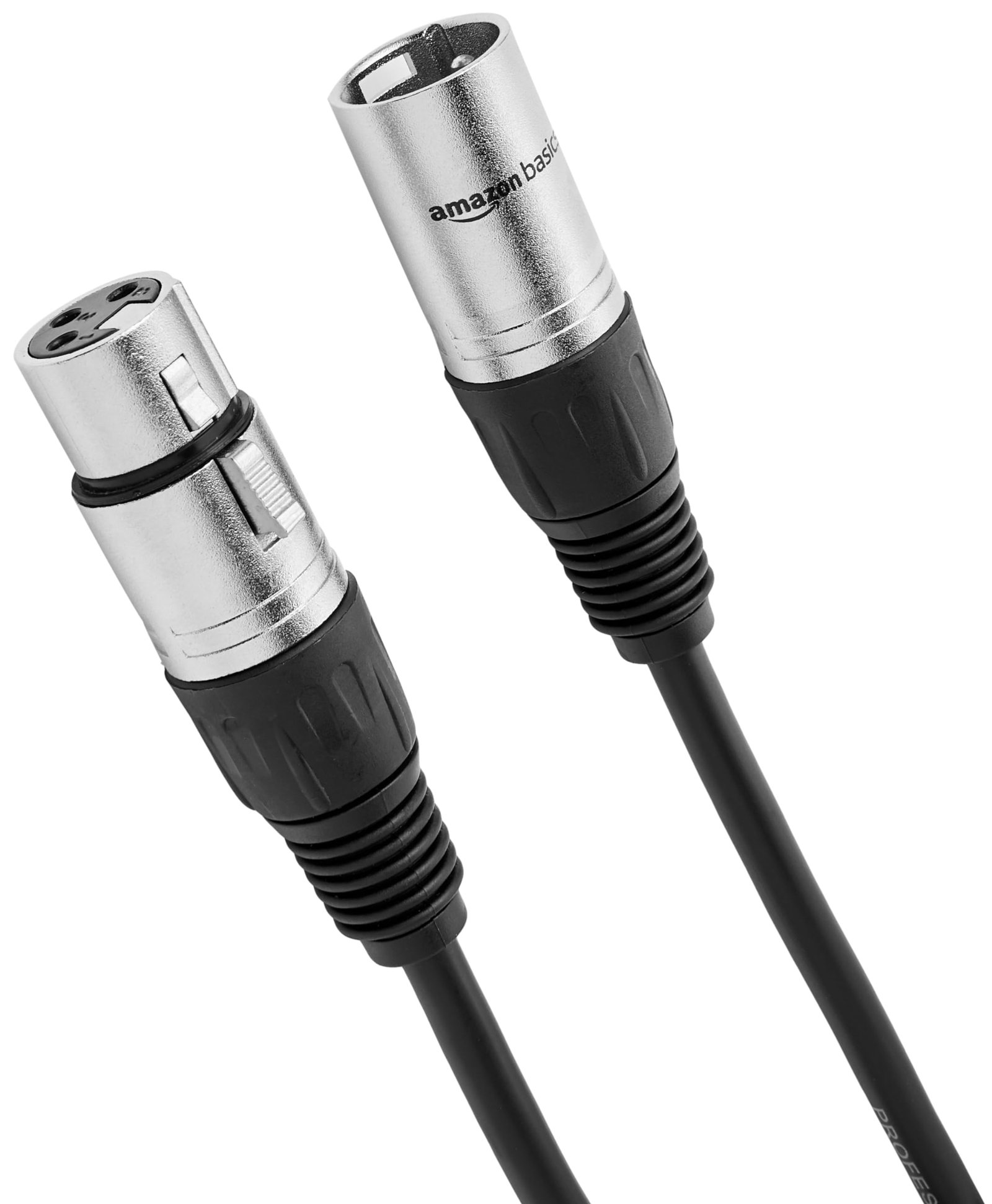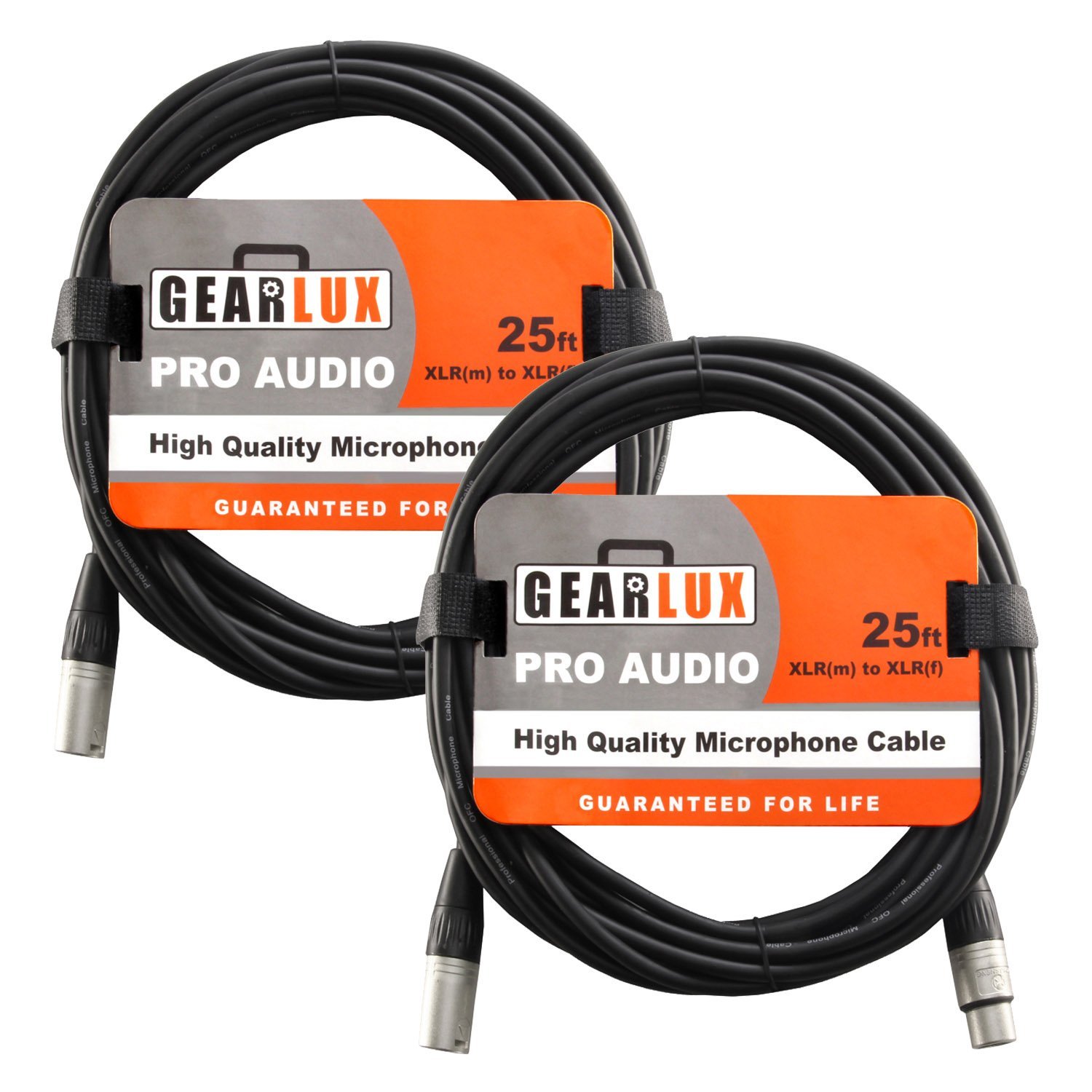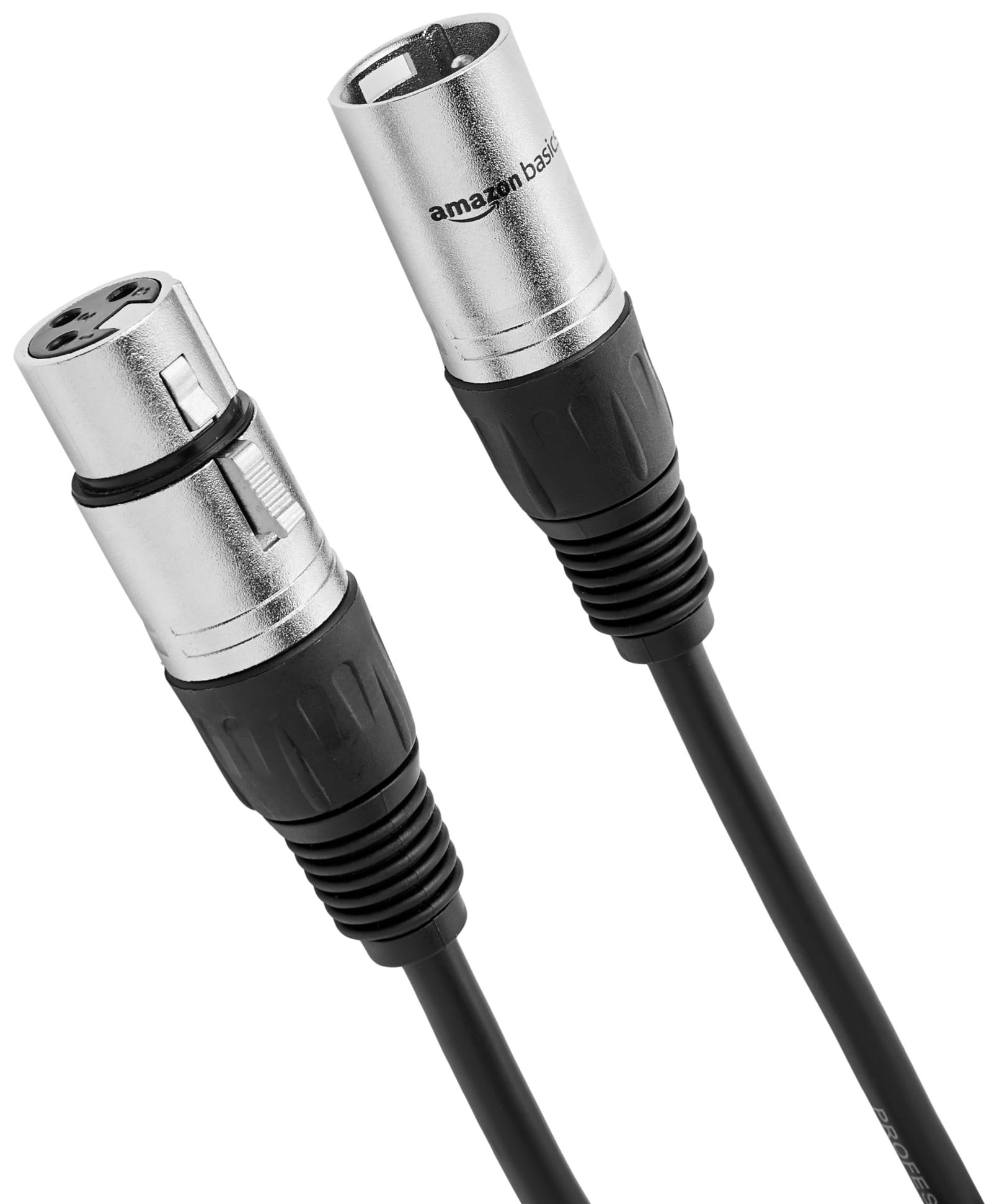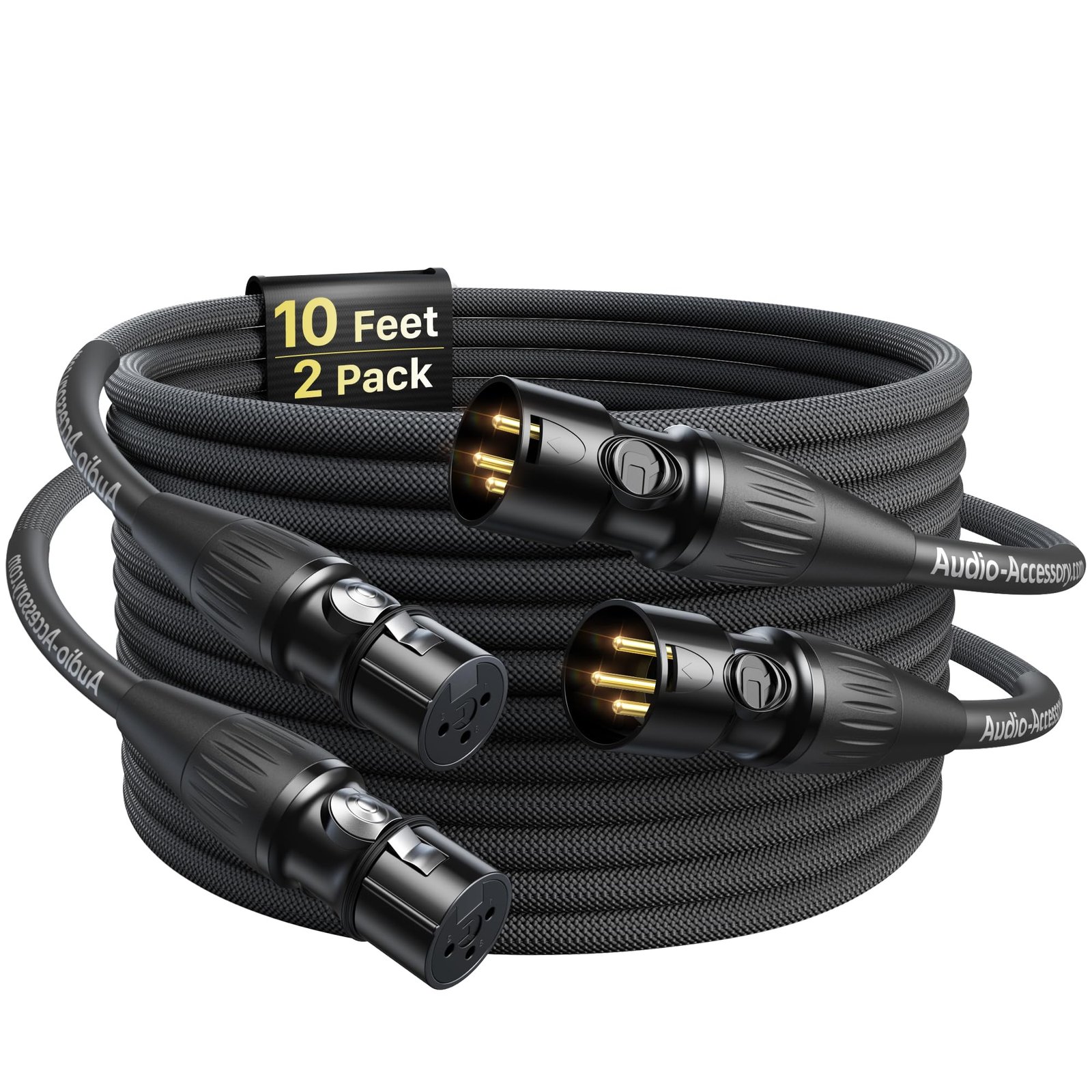XLR cables are a staple in the world of professional audio and recording.
Sound engineers and musicians often choose these cables for their durability and reliable connections.
XLR cables typically feature three pins and a circular connector.
That’s why you might often find them used to connect microphones to mixers or other audio equipment.
One of the main advantages of XLR cables is their ability to carry balanced audio signals.
Balanced signals help to reduce noise and interference, ensuring a clean and clear sound.
This is especially important in environments where multiple electrical devices might cause unwanted disturbances.
When choosing XLR cables, you should consider the length you need, the quality of the connectors, and the thickness and flexibility of the cable itself.
When purchasing XLR cables, pay attention to the build quality.
Look for cables with sturdy metal connectors and strong, flexible jackets that can withstand frequent use.
A well-made XLR cable can significantly enhance your audio setup, effectively bridging the gap between microphones and sound equipment.
Top XLR Cables
Whether you’re setting up a recording studio or connecting to a sound system, having reliable XLR cables is crucial.
We’ve gathered the best options to make your choice easier.
Amazon Basics Microphone Cable
Affordable and reliable, this Amazon Basics XLR Cable is your go-to for quality sound connections without breaking the bank.
- Durable construction for long-lasting use
- Effective noise-canceling features
- Budget-friendly option
- Limited length options
- Basic design with no color variety
- May not suit high-end professional needs
This 6-foot XLR cable from Amazon Basics is perfect for connecting your microphone to speakers or a PA system.
It offers clear audio transmission thanks to its all-copper conductors and metal housing, designed to reduce interference.
The cable is both flexible and durable, ensuring it withstands the rigors of frequent use.
You’ll appreciate the reliable performance of this cable during studio recordings or live performances.
Its affordability combined with effective noise-canceling features makes it a practical choice.
It might not offer the chic design some high-end cables boast, but it gets the job done efficiently.
If you’re searching for a cable that delivers on quality and price, this could be a great addition to your audio setup.
Whether you’re a novice or have more experience, this XLR cable provides solid performance suitable for most needs.
Cable Matters XLR Cable 2-Pack
A solid audio solution with quality sound and durable construction makes this XLR cable set a strong contender for anyone needing reliable connectivity.
- High-quality sound clarity
- Durable and robust design
- Flexible two-pack bundle
- Slightly higher price point
- Not as long as some alternatives
- Limited color options
For musicians or audio engineers, this cable set offers an excellent balance of performance and durability.
The sound clarity you get from the Cable Matters XLR cables makes them ideal for both studio recordings and live performances, delivering the crisp audio professionals rely on.
The robust build, featuring heavy-duty metal connectors and copper braided shielding, ensures that these cables will stand up to plenty of use without compromising on performance or reliability.
Whether you’re setting up in a studio or on stage, their design helps to minimize any audio interference.
Though they might be priced a bit higher than similar cables, this extra investment could pay off in the long run due to their durability.
Plus, the flexibility of having a two-pack allows you more options for different setups.
If you’re willing to invest in quality, these cables are well worth considering.
Gearlux XLR Microphone Cable 25 Ft
If you’re after reliable XLR cables with strong connections and minimal noise for studio or live performances, these are a solid pick.
- Lifetime guarantee means peace of mind for long-term use.
- Rugged metal connectors ensure durability under frequent use.
- Oxygen-free copper cores enhance signal quality.
- Connectors might twist easily if not handled carefully.
- Some might find the plugs a bit rough or hard to maneuver.
- The 25-foot length may be excessive for tight setups.
Gearlux offers a well-built, noiseless instrument cable for both studio and live scenarios.
The quality construction with oxygen-free copper cores means you’ll get improved audio fidelity.
Plus, a lifetime guarantee shows the brand’s confidence in their product’s durability.
The 25-foot length gives you extra room to maneuver, although this might be a downside in a cramped space.
For larger setups or outdoor gigs, though, it could be exactly what you need.
The connectors are tough, though a bit more twisting than some might prefer.
Overall, these XLR cables excel in audio clarity and durability, ensuring your performance sounds as clear as possible without signal loss.
Whether you’re a professional or just starting, they promise to be a trusty addition to your audio setup.
Amazon Basics XLR Microphone Cable
A reliable and durable option for connecting your audio equipment without breaking the bank.
- Affordable without compromising quality
- Reduces noise interference effectively
- Sturdy build with flexible design
- May become tangled with frequent use
- Limited to black color choice
- Not the longest cable available
If you’re looking for an XLR cable that’s both budget-friendly and reliable, the Amazon Basics XLR Microphone Cable is a strong contender.
Its all-copper conductors ensure superior audio transmission, minimizing interference for a clear sound experience.
This makes it a great choice for studio recording or live sound situations.
What sets this cable apart is its durable construction, featuring zinc alloy connectors and a robust PVC jacket.
It’s designed to withstand regular use while remaining flexible enough for easy handling.
The 25-foot length is sufficient for most setups, giving you the freedom to move around without unplugging.
The downsides include occasional tangling, which can be cumbersome during live gigs or frequent movement.
Yet, if you prioritize value and performance, this cable offers a solid combination of both.
Whether you’re a seasoned audio professional or just starting out, this cable is worth considering for your audio setup.
AA Audio XLR Cables
These cables are a solid choice if you need durable audio connections with excellent sound clarity.
- Durable, thanks to Kevlar reinforcement.
- Features reliable Rean connectors.
- Multiple layers of shielding for noise-free audio.
- Some users might prefer thicker cables.
- May be mistaken for higher-priced Neutrik brand.
- Slightly higher price point than basic options
If you’re after toughness and performance, these XLR cables from AA Audio won’t let you down.
The Kevlar-reinforced design ensures they can handle stress, making them great for gigs and studio use alike.
The connectors, manufactured by Rean under Neutrik standards, provide a stable, high-quality connection.
You can count on them for crisp sound transmission without annoying noise interference.
While the price may be a bit higher than bargain options, their longevity and reliability could save you money in the long run.
Still, don’t expect them to match the top-tier audio cables, but they could be a smart step up from budget choices.
Buying Guide
When you’re shopping for XLR cables, there are a few key factors to keep in mind.
First, consider the length of the cable you need.
Longer cables can offer more flexibility in setup but may lead to signal loss if not well-made.
Shorter cables are typically more reliable, but make sure they reach your gear comfortably.
Material and Durability
Check the material used for both the connectors and the cable jacket.
Gold-plated connectors offer resistance to corrosion and better conductivity.
For the jacket, a flexible yet robust material like PVC or rubber can withstand wear and tear.
Look for braided shielding to minimize interference.
Shielding and Noise Reduction
Good shielding is a must for clean audio. Braided or foil shielding types are common, with braided providing better noise reduction.
This helps prevent unwanted buzzes or interference.
If you’re in a high-interference environment, prioritize cables with better shielding.
Connector Quality
Examine the build quality of the connectors.
They should fit snugly and securely into your devices.
Poor-quality connectors can cause static or a loose connection, so pay attention to the details.
Reliable connectors should click smoothly into place.
Budget and Needs
Balance your budget against your needs.
Investing in higher-quality cables can be worth it for important gigs or professional settings.
If you’re just starting out or need cables for less demanding scenarios, budget-friendly options are fine.
| Feature | Recommendation |
|---|---|
| Length | Based on setup needs |
| Material | Gold-plated connectors, flexible jacket |
| Shielding | Braided or foil-based |
| Connectors | Secure, well-built |
| Price Range | Align with your needs and usage |
Frequently Asked Questions
XLR cables serve essential roles in audio setups and are unique compared to other types.
Their influence on sound quality and versatility make them a focal point for both amateurs and professionals.
Different types, uses, and connector variations can guide your choices when selecting the right cable.
What’s the difference between XLR and jack cables, anyways?
XLR cables have three pins designed for balanced audio signals, reducing noise over long distances.
Jack cables, often seen in 1/4″ and 1/8″ sizes, can be used for both balanced and unbalanced connections but are more common in home and studio setups.
Can an XLR cable really affect sound quality?
Yes, it can.
A high-quality XLR cable maintains signal integrity with minimal interference, preserving the audio’s clarity.
Cable construction, such as shielding and connector quality, plays a significant role in the sound transmitted.
Looking for the best XLR cables – any suggestions?
Brands like Mogami, Canare, and Neutrik offer reliable XLR cables recognized for durability and performance.
Consider the build quality and connector types, as well as specific needs, like length and flexibility, to find the best fit.
What are XLR cables typically used for?
XLR cables are widely used in professional audio environments.
You’ll find them connecting microphones to mixers, audio interfaces, and speakers.
They are favored for delivering consistent and balanced audio signals.
Are there different types of XLR connectors I should know about?
Yes, there are several types.
The most common is the 3-pin variety, used for audio.
You might also encounter 5-pin connectors in lighting and specialized audio equipment.
Understanding the specific application helps in choosing the right type.
How do I choose the right XLR cable for recording?
Consider the length you need.
Longer cables can introduce noise.
Look for cables with good shielding to prevent interference.
High-quality connectors that fit snugly will also ensure reliable performance.






